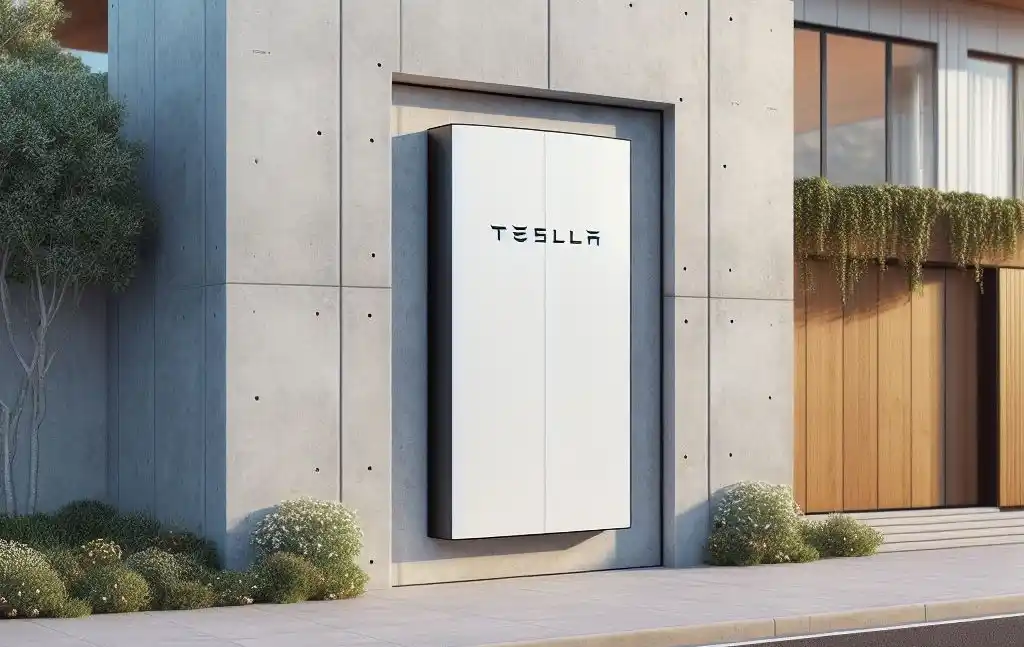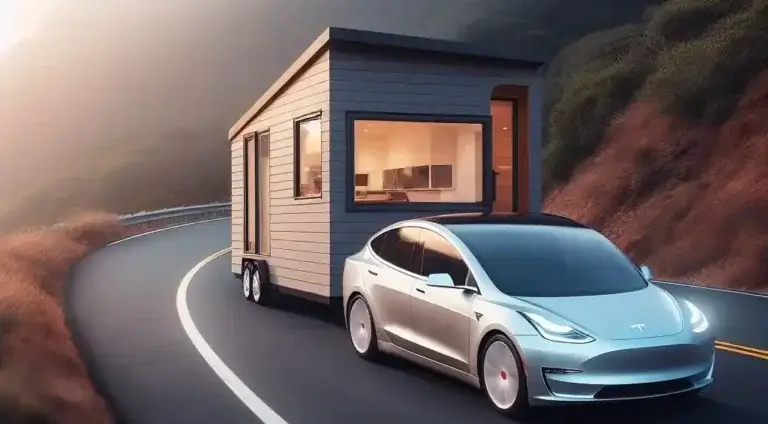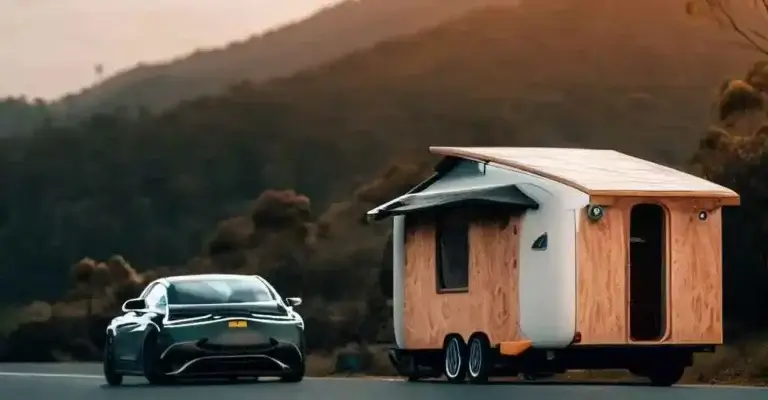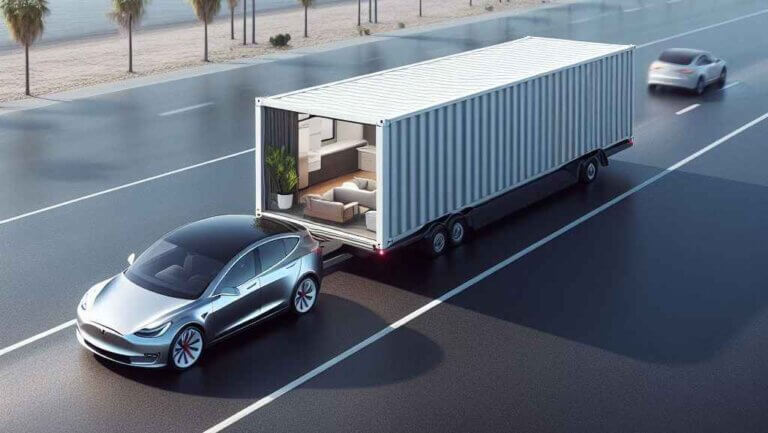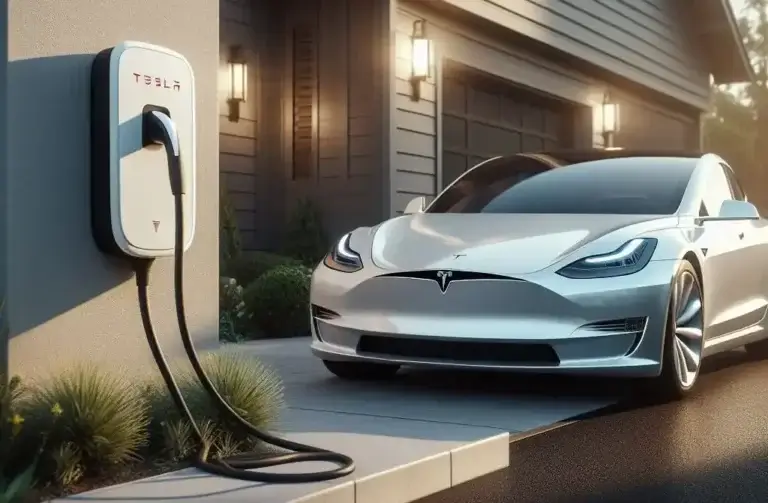The Ultimate Guide to Using Tesla Powerwall for RV Electrical Systems
Are you an RV owner looking to upgrade your electrical system? Installing a Tesla Powerwall can provide powerful lithium-ion battery storage and solar charging to keep your trailer powered up. In this comprehensive guide, we’ll cover everything you need to know about using Tesla Powerwall for RVs and other key benefits that Tesla Powerwall offers over traditional RV power sources.
Table of Contents
Introduction to Tesla Powerwall for RVs
A Tesla Powerwall is a rechargeable lithium-ion battery system designed by Tesla Motors for residential and light commercial use. The Tesla Powerwall and Powerwall 2 have gained popularity among RV owners for providing robust off-grid power storage and seamless integration with solar power systems.
There are several key reasons why Tesla Powerwall is an ideal energy storage solution for RVs:
- High Capacity – The Tesla Powerwall 2 has 13.5 kWh of usable capacity, enough to power most RV appliances and accessories for multiple days without sunlight. The older Powerwall 1 has a 7kWh capacity.
- Lithium Batteries – Tesla uses high-quality lithium-ion battery cells with a long cycle life. Lithium batteries are lighter, more compact, and more efficient than traditional lead-acid batteries used in RVs.
- Smart Software – Tesla’s battery management system carefully monitors voltage, current, and system performance. The Tesla app allows remote control, monitoring, and software updates.
- Solar Integration – Tesla Powerwall works seamlessly with solar panel systems for renewable charging and maximum energy independence when living off-grid or boondocking.
- Reliable Power – Tesla Powerwall can provide reliable clean power during outages or when shore power is unavailable. Keep your appliances, air conditioning, essential medical devices, and other electronics powered up.
Over the rest of this guide, we’ll take a deeper look at how to install and use Tesla Powerwall for RV applications and outline the costs and key factors involved with integrating Tesla batteries into an RV electrical system.
How Much Power Do I Need for My RV?
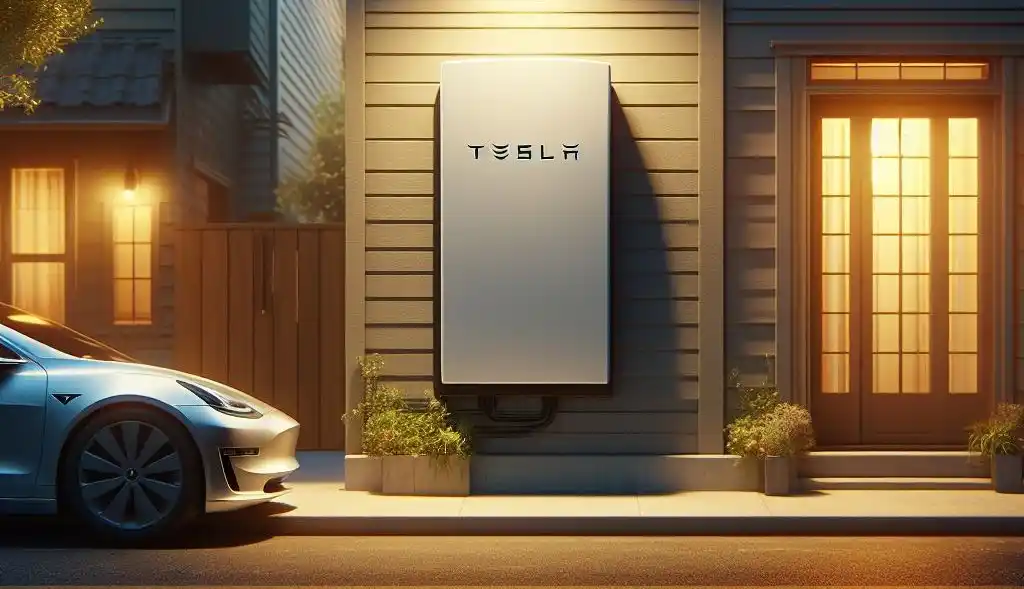
When considering adding a Tesla Powerwall to your RV, the first step is calculating your typical energy usage so you can properly size the system.
Here are some average power requirements for common RV appliances and accessories:
- Air Conditioner – Draws about 1500-3500 watts per hour when running. New compact ACs can use 500-1200 watts.
- Microwave Oven – Requires around 1000-1500 watts to operate.
- Electric Water Heater – Uses 1200-1500 watts per hour.
- RV Refrigerator – 200-400 watt-hours per day for a typical compressor model.
- Laptop Computer – 50-100 watt hours per day.
- Smartphone Charging – 5-10 watt hours per full charge.
- Television – 50-150 watts per hour depending on television size.
- Coffee Maker – 600-1200 watts while heating water.
Based on your regular activity schedule and which appliances you need to run, calculate a rough estimate of your daily power budget. Adding up the average watt hours per day for the key appliances and devices you use provides the baseline to size your solar panels and Tesla Powerwall system appropriately.
How Many Tesla Powerwall Units Are Needed for RV Use?
Most RVs can get by quite well with a single Tesla Powerwall 2 unit providing 13.5 kWh of usable capacity for lithium-ion energy storage. For minimal off-grid boondocking needs, 1 Powerwall should have enough juice to handle short-term power demands.
Having two Tesla Powerwall batteries installed will approximately double your usable capacity and electrical independence by providing 27kWh total. This would support more extensive off-grid dry camping adventures and sustain heavier daily power loads. Consider multiple Powerwall units if you have a larger Class A RV or fifth wheel with high electricity demands.
Installation space may limit some RVs to using just 1 Powerwall module. Check under beds, and exterior bays or consider mounting solutions to accommodate the Powerwall box which measures 45” x 29” x 5.5”. A single unit weighs in at 137 lbs for the Powerwall 2 while the older 7kWh Powerwall 1 weighs 121 lbs.
Wiring two or more Powerwall systems in parallel is relatively straightforward when integrating into an existing RV electrical system and solar panels. The modular nature makes adding a 2nd (or 3rd) simple if more capacity is needed down the road.
Now let’s take a look at the all-important question of cost…
How Much Does Tesla Powerwall Cost for RV Installation?

As with any upgrade, deciding whether the investment into a Tesla Powerwall is worthwhile depends on your budget and boondocking power needs. Here is a cost breakdown:
- Tesla Powerwall Unit – The main battery unit ranges from $7,500 to $12,500 depending on the Powerwall model purchased directly from Tesla for residential projects. Wholesale or purchasing used units can reduce expenses as well as the Tesla warranty.
- Inverter – A solar battery inverter to convert DC energy into AC starts at around $2,500. Look for a 3,000+ watt pure sine wave inverter for RV installations.
- Install Cost – Expect to spend $1,000 to $4,000 or more for professional Powerwall installation including labor, wiring, conduit, and integrating solar charge controller. DIY can dramatically reduce expenses.
- Solar Panels – While strictly optional, adding a solar array hugely multiplies the functionality of a Tesla Powerwall system. Plan for an average range of $2,500 to $6,000 depending on roof panels and annual solar electricity needs. Ground mount is often cheaper.
Total System Cost Estimate – $10,000 to $25,000+
At first glance, this seems quite pricey compared with adding extra lead-acid batteries or a suitcase generator to your RV. However, the 10+ year lifespan, low maintenance requirements, and incredible 30,000+ lifecycle rating of lithium-ion Powerwall batteries ultimately pay dividends over time.
Key Factors for Powerwall Integration in an RV Electrical System
Installing a Tesla Powerwall in a vehicle that is constantly moving brings unique project considerations compared with grid-tied residential units. Using the Tesla-provided wall mount bracket is certainly not feasible here!
Some top tips for successful RV Powerwall projects:
- Carefully measure the install location first – Powerwall measures 45” tall x 29” wide x 5.5” deep and up to 137 lbs. You need sufficient room for convenient servicing and wiring.
- Wire to an automated solar charge controller or RV converter for proper regulation of charging from solar panels or vehicle alternator sources.
- Use the Powerwall “Backup Gateway” wired install mode to interface with RVs 12vdc or 24vdc systems. This mode is for off-grid integration only without grid sell-back metering.
- For hardwired installs use the Tesla Gateway system for self-consumption solar regulation, software updates, and Powerwall control via WiFi. The older Powerwall 1 model requires the Gateway to function.
- Consider ventilation requirements – The powerwall unit’s maximum ambient heat tolerance is around 100°F before potential performance impacts.
- Properly ground the entire system according to national and local electrical codes. Surge protection should also be installed.
- Expect some trial and error tweaking settings – Powerwall is a sophisticated technology that interacts with complex vehicle systems. Consult professionals as needed if DIY abilities don’t cut it.
While connecting up Powerwall does require thoughtful planning and diligent execution, RVers who DIY report very positive experiences if taking the necessary precautions. Thousands of dollars can potentially be saved by stringing the wires yourself versus paying premium rates for an experienced installer/electrician.
Next, let’s review proper voltage considerations when installing Tesla Powerwall off-grid…
Matching Voltage: Integrating Tesla Powerwall into 12V or 24V RV House Electrical Systems

Tesla Powerwall units have a nominal DC output voltage of around 390 volts. Thus connecting directly to the 12-volt or 24-volt DC systems generally used in RV house electrical systems requires voltage conversion.
Here are the two options:
DC-DC Voltage Converter – Uses complex circuitry to dynamically shift 390VDC down to 12V or 24V supply for the RV house system. The benefits are no AC inverter required and therefore higher energy efficiency. Downsides are higher cost and most converters max out 3000-5000 watt capacity limiting full Powerwall discharge rate into vehicle electrical.
AC Inverter – The more popular solution is to use a large pure sine wave inverter rated at 3000 watts or greater. Quality inverters convert the 390VDC output from Tesla batteries into the standard 120-volt AC that most RV appliances and electronics require. The RV distribution panel then shifts AC down to 12vdc for interior lighting, water pumps, etc.
Using an inverter interface allows the full Powerwall 13,500 watt-hours capacity to be deployed and avoids max discharge bottleneck issues with DC-DC converters. Just be sure to right-size the inverter to panel amperage to prevent overload.
Either voltage interface approach can work reliably once properly set up. Choosing DC or AC comes down to cost, efficiency needs, and your configuration’s technical constraints.
Tesla Powerwall and Solar Charging while RVing
The beauty of incorporating Tesla Powerwall into an RV energy system design is the flexibility for solar charging from roof panels or portable ground arrays. This provides the ultimate in renewable off-grid capacity for boondocking adventures or sustaining daily electrical loads while RVing full-time.
With 400+ volt maximum solar input specs, the Tesla Powerwall units are well equipped for high-efficiency charging from solar arrays rated up to 9kW to 11kW. For comparison, most RV roof mounts top out around 3kW size.
Charging sources flow through these priority levels coordinated by the onboard battery management system:
- Solar power (if equipped)
- Vehicle alternator power while driving
- Shore power connection when available
During periods of low usage or high solar generation, Powerwall batteries can reach 100% state of charge quite quickly. The batteries also support rapid charging rates from an alternator or 50 amp shore power when in need of quickly resupplying capacity after overnight use or cloudy weather.
Intelligently leveraging all available charging sources provides incredible energy autonomy and stability for off-grid RV living. Just remember to budget electrical loads carefully when weather limits solar contribution for extended periods.
Next, let’s examine how the Tesla Gateway functionality can assist with Powerwall installations…
Getting the Most from Tesla Gateway and Smart Software
What sets Tesla Powerwall battery systems apart from standard RV lithium batteries is the integrated Gateway device and intelligent software features.
The Tesla Gateway is the “smart hub” that helps automate system operation, monitoring, and control. Key Gateway features include:
- Solar regulation for high-efficiency charging
- Software updates to the latest operating system
- Real-time status visibility – charge levels, solar input, consumption
- Support for smartphone app and off-site monitoring
- Integrated wired Ethernet and WiFi networking connectivity
Powerwall units utilize integrated thermal and battery management components to track individual cell voltage, and temperatures and prevent damage from out-of-bounds electrical events. You benefit from lifetime system performance maximization without needing to manually balance or maintain batteries.
Monitoring through the Gateway connection via the Tesla mobile app allows keeping tabs on the state of charge and usage metrics from anywhere you have internet access. This gives peace of mind on battery status and solar collection rates as environmental conditions change when on extended trips.
Finally, the Gateway facilitates remote troubleshooting technical support and automatic software improvements from Tesla as they release periodic OTA (over-the-air) updates. Think of it like getting magically upgraded features on your smartphone but for smarter control of advanced energy storage technology!
RV Electrical Safety Considerations
Integrating lithium batteries, solar arrays, inverters, and other high-voltage DC/AC equipment into RV electrical systems requires a focus on safety. Invariably cables are running, buttons to push, and screens to configure. Just remember – electricity demands respect at all times.
Consult a professional installer if not 100% confident in your abilities to properly wire and operate a Tesla Powerwall installation.
With DIY installs, be sure to:
- Carefully read ALL Tesla Powerwall technical manuals before physical installation
- Use appropriate DC/AC wiring gauges – thicker cables have higher ampacity
- Employ fuses or breakers according to device ratings at both battery and equipment endpoints
- Verify electrical polarity through every step of wiring pathways
- Twist positive/negative cables together to reduce EM interference
- Label all cables/wires clearly at BOTH ends
- Use conduits, grommets, and strain relief wherever cables pass through mounting holes
- Install a safety disconnect switch reachable from outside the RV
- Consider installing surge protection, separate ground rods, and lightening arrestors for severe weather
Building redundancy into safety systems helps further reduce any risk when handling high-voltage equipment. Having an installation professionally assessed even on DIY projects provides extra assurance all national electrical code requirements have been met.
Stay safe and take your time developing solid mechanical and electrical fabrication skills over multiple smaller projects before diving straight into complex RV battery banks. The DIY learning curve working with DC circuits, inverters, and solar components has great practical rewards when installing Tesla Powerwall systems from the ground up!
Common Questions about Powerwall for RV Use (RV FAQ)
Here are answers to some frequently asked questions about utilizing Tesla Powerwall technology for powering RV electrical systems:
Can a single Powerwall run my RV air conditioner?
One Powerall 2 (13.5 kWh capacity) can potentially run a compact RV roof AC drawing 1500 watts for around 9 hours. Need to recharge from solar, alternator, or shore power to resume cooling.
What size inverter is recommended?
3000-watt or greater pure sine wave inverter suitable for most medium-sized RV applications with 1 x Powerwall 2 unit. Size appropriately for your expected peak power loads.
Do I need a generator if I have Powerwall + Solar?
Generally no. Tesla batteries and solar provide primary electricity. Generator becomes backup redundancy for long overcast weather or running intensive loads occasionally.
Can Powerwall completely replace my RV house batteries?
Yes, although keeping an AGM or lead-acid house battery allows starting the engine if the primary lithium bank is depleted. Just don’t combine lead-acid + lithium chemistries directly.
Is it difficult to install myself?
Intermediate electrical DIY skills are recommended. Getting professional assistance tailoring the system design & installation to your specific RV can optimize the project’s success if new to solar/batteries.
Can I take Powerwall with me to a new RV when I upgrade?
Powerwalls are indeed portable to future vehicles. The modular battery bank, solar controllers, and inverter electronics can migrate to fresh installations as you upgrade RVs.
How long do Powerwall batteries last?
Tesla supports the Powerwall capacity warranty for 10 years with a gradual decline down to 70% of the new rated capacity at the end of the warranty period. Useful service life is 15-20 years for most lithium batteries with careful use.
Summary – Key Takeaways Using Tesla Powerwall in RVs
Hopefully, this extensive guide has shown the potential benefits and key considerations when adding Tesla Powerwall lithium-ion storage to an RV. Here’s a quick summary of the most vital takeaways:
- Multiple days of lithium energy capacity from 13.5 kWh Powerwall 2
- Integrates well with solar charging extending off-grid sustainability
- Reliable clean power protection from electrical shortages
- Universal compatibility supporting 120-volt AC RV appliances/devices
- Smart integrated battery management and software updates
- RV suitable install avoiding vehicle vibration/shock/moisture
- Understanding electrical safety protocols is mandatory
- Professional assistance is recommended for first-time installs
While certainly an investment, outfitting an RV with Tesla Powerwall technology provides a huge boost in comfortable independence while off the grid. Savvy RVers can save big money on camping fees year after year using sustainable solar energy sources amplified by safe lithium energy storage capacity. Never stress about running out of power again!

